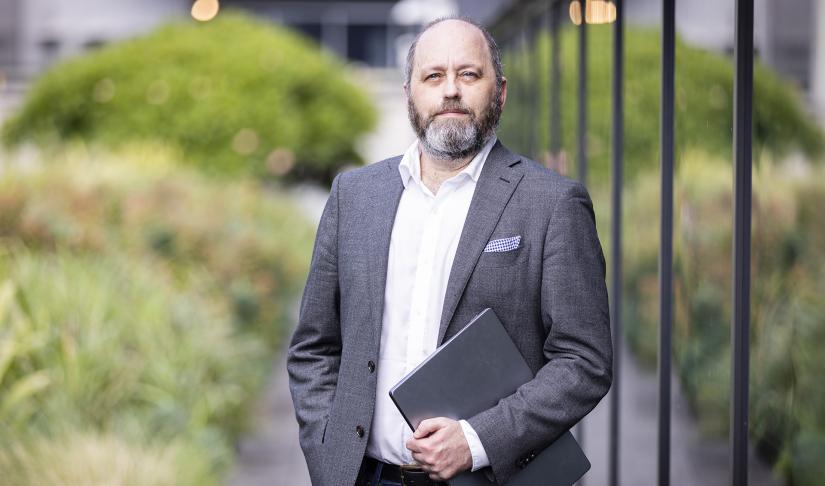Having reshaped our lives during the pandemic, mRNA vaccine technologies are set to change the face of agriculture.

Professor Garry Myers. Photo Andy Roberts
With more than 50 million doses of messenger ribonucleic acid (mRNA) vaccines having been given to Australians to stop the spread of COVID-19, most of us associate the emerging technology with human health.
But Professor Garry Myers, Director of the UTS Australian Institute for Microbiology and Infection (AIMI), thinks we’re just beginning to tap the potential of the technology platform.
“The capabilities that are offered by mRNA technology have been validated by the whole COVID-19 pandemic. There’s so much potential, particularly for use with animals,” Professor Myers says.
“We’re looking to leverage off the work that we’re doing here currently with mRNA vaccines to look into various aspects that are relevant to agriculture and biosecurity.”
He will spend six months in 2024 exploring these fields as the Fulbright Distinguished Chair in Agriculture and Life Sciences at Kansas State University.
The research at AIMI into mRNA vaccines began with a focus on new therapeutics to beat anti-microbial resistance, a growing problem in hospitals as well as agriculture.
An mRNA approach allows us to think about rapid, personalised vaccines.
"It would be possible to take a swab of whatever’s infecting an individual and isn't responding to antibiotics, and quickly make a vaccine for them that's either prophylactic or therapeutic,” he says.
From these beginnings, their research has broadened to explore a variety of agricultural uses such as immunisation against crippling animal diseases such as cattle ticks and sheep foot rot.
While finding new ways to beat these diseases could save hundreds of millions of dollars each year, Professor Myers sees the potential of a new class of animal vaccines to reshape the livestock industries.
“We’re also looking at vaccines for treating multiple diseases with one injection. While well-established for humans, such as with the Measles-Mumps-Rubella vaccine we get as kids, this hasn't really been done for animals yet,” he says.
“If we look at tailored, multivalent vaccines, we can potentially target the animal diseases in a particular region. The pathogens that say a cow is exposed to in northern Queensland is different to those in Victoria.”
In an industry where disease (such as those from cattle ticks) is one of the main obstacles preventing livestock surviving in certain regions, these regional vaccines could enable breeds that current live only in southern Australia to range further north.
“There’s a lot of work happening globally using this new paradigm, but animal health is slower. The agricultural sector is firmly focused on the bottom line and mRNA technology will get cheaper all the time,” he says.
Professor Myers will be able to progress this research in new ways through the Fulbright Distinguished Chair.
“Kansas State University is one of the key hubs for biosecurity research in the US, partnering with the US Government huge tornado-proof biosecurity facility that goes straight down underground and enables the most sensitive research into animal diseases,” he says.
“I’ll be able to bring the research and learnings from the Fulbright back to UTS and help us to continue to take a leading role in developing mRNA technologies for Australia.”

